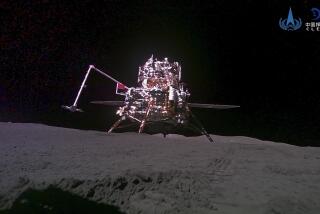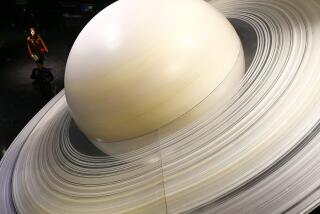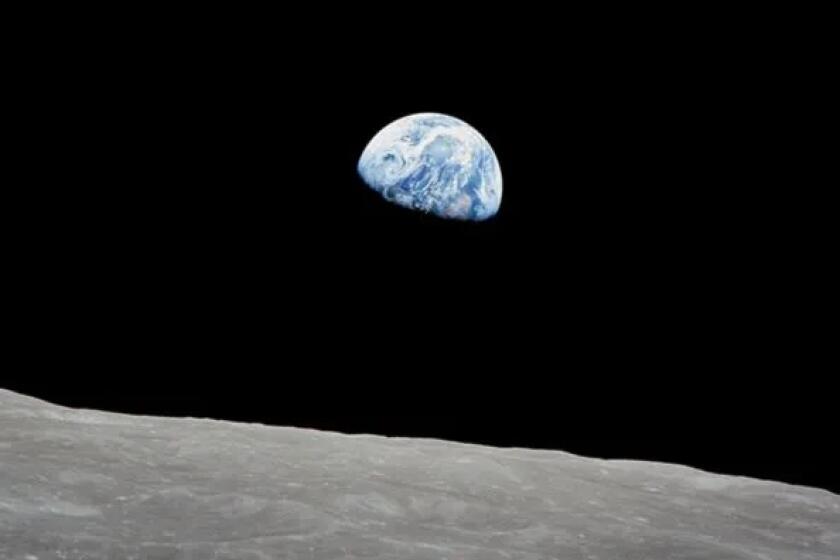Found: Earth-like planet in two-sun system. Are there more? [VIDEO]
Astronomers have spotted an Earth-like planet orbiting a single star in a two-star system, roughly 3,000 light-years away.
The newly found world is the second Earth-like planet to be observed in a compact binary star system, but its discovery suggests there may be just as many planets in two-star systems as there are around single stars.
“In the past, whenever we saw a binary system we just stopped looking for planets,” said Andrew Gould, an astronomer at Ohio State University. “Now we realize it is a pretty big planet hunting ground.”
Gould is the lead author of a paper describing the planet’s discovery published Thursday in the journal Science. He explained that it is not a problem for a planet to exist in a system where the two stars are relatively close to each other (in this case, about 10 to 14 times the distance between the Earth and the sun). However, it wasn’t clear that a planet could form in such a system.
“Planets don’t form out of thin air, they form out of disks of material, and it hasn’t been known if this disk of material could remain stable enough to form a planet in the presence of another star,” he said. “We didn’t have any evidence one way or another.”
The newly detected world is twice as massive as the Earth, and it orbits its host star at about the same distance that we orbit the sun.
That may sound promising for life, but it isn’t. The planet’s host star is a late class M dwarf and therefore much dimmer, redder and colder than our sun. The newly found world would probably be an ice world, about the same temperature at its surface as Jupiter’s ice moon Europa.
If you stood on the planet the host star would look about seven times smaller than the Earth’s sun and, to the naked eye, 10,000 times more faint. The other star in the binary system would look less like a sun, and more like a super bright red star shining about as brightly as the moon.
“One of these stars would feel like it was your star, and the other one would be a bright point of light,” said Gould.
To find the planet, the researchers relied on a mathematically complex technique that was first proposed by Albert Einstein about 100 years ago.
Einstein suggested that if you stare at one of the stars in the center of our galaxy for long enough (like, millions of years), eventually, by chance, another star will move almost directly in front of the star you are looking at. When that happens, the mass and gravity of the foreground star focuses the light of the background star, so that the light that would have gone in all directions is, for a short time, in alignment with the background star.
If you happened to catch this phenomena happening, you would see the background star appear to grow brighter as the foreground star focused the light, and then grow dimmer as the foreground star moved away.
The problem with this technique, known as gravitational microlensing, is that stars don’t move directly in front of each other very often, and astronomers can’t predict when it will happen.
“Einstein said there was about a one-in-a-million probability that you would see it happen,” said Scott Gaudi, a professor of astronomy at Ohio State University, and a coauthor of the paper. “It turned out he was right, but today we can look at millions of stars at a time, and at any given time, this is happening to one of them.”
To find a planet using microgravitatonal lensing, the researchers look for a small blip in the amount of light being magnified by the foreground star. That blip indicates the gravity of yet another body --a planet orbiting the foreground star -- has acted on the light of the background star.
In order to collect enough data points on these “blips,” Gould and Gaudi have teamed up with a network of amateur astronomers from across the planet.
“We don’t really need big telescopes to do this kind of work, small telescopes are fine, but we need to have them all over the world,” said Gaudi. “When we start to see a star getting brighter, we call all our friends and say, ‘Hey, look at this star!’”
This team effort, known as the Microlensing Follow Up Network (MicroFUN) explains some of the unusual institutions that are listed as contributing to the study, including the “Possum Observatory” and the “Center for Backyard Astrophysics,” both in New Zealand.
The researchers were able to tell that the planet they detected was in a binary system because of an additional deviation in their data, above and beyond the deviation that a planet would cause.
Moving forward, Gould said he and his international team of astronomers will no longer ignore binary systems in their hunt for more planets. Expect discoveries of more worlds in two-star systems to follow.
For more news from the frontiers of science, follow me @DeborahNetburn







